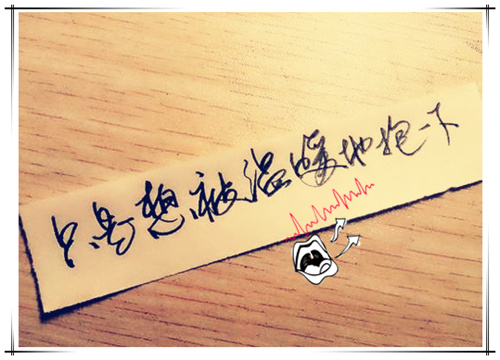
高考作文阅读主题【一】
答题要点:
(1要点明说明对象;
(2要点明说明对象的特征:
(3要生动形象,吸引读者阅读兴趣。
高考作文阅读主题【二】
Make Up Your Mind to Succeed
Kind-hearted parents have unknowingly left their children defenseless against failure.
The generation born between 1980 and 2001 grew up playing sports where scores and performance were played down because “everyone’s winner.” And their report cards sounded more positive(正面的)than ever before. As a result, Stanford University professor Carol Dweck, PHD, calls them” the overpraised generation.”
Dweck has been studying how people deal with failure for 40 years. Her research
has led her to find out two clearly different mind-sets that have a great effect on how we react to it. Here’s how they work:
A fixed mind-set is grounded in the belief that talent(才能 is genetic – you’re a born
artist, point guard, or numbers person. The fixed mind-set believes it’s sure to succeed without much effort and regards failure as personal shame. When things get difficult, it’s quick to blame, lie, and even stay away from future difficulties.
On the other hand, a growth mind-set believes that no talent is entirely heaven-sent
and that effort and learning make everything possible. Because the ego(自尊)isn’t on the line as much, the growth mind-set sees failure as a chance rather than shame. When faced with a difficulty, it’s quick to rethink, change and try again. In fact, it enjoys this experience.
We are all born with growth mind-sets. (Otherwise, we wouldn’t be able to live in the
world. But parents, teachers, and instructors often push us into fixed mind-sets byencouraging certain actions and misdirecting praise. Dweck’s book, Mind-set: The New Psychology of Success, and online instructional program explain this in depth. But she
says there are many little things you can start doing today to make sure that your children, grandchildren and even you are never defeated by failure.
( 57. What does the author think about the present generation?
A. They don’t do well at school.
B. They are often misunderstood.
C. They are eager to win in sports.
D. They are given too much praise.
( 58. A fixed mind-set person is probably one who ___ .
A. doesn’t want to work hard
B. cares a lot about personal safety
C. cannot share his ideas with others
D. can succeed with the help of teachers
( 59. What does the growth mind-set believe?
A. Admitting failure is shameful.
B. Talent comes with one’s birth.
C. Scores should be highly valued.
D. Getting over difficulties is enjoyable.
( 60. What should parents do for their children based on Dweck’s study?
A. Encourage them to learn from failures.
B. Prevent them from making mistakes.
C. Guide them in doing little things.
D. Help them grow with praise.
Not everyone who teaches in a college or university is a professor. Many are instructors or lecturers. In fact,not even all professors are full professors. Many of them are assistant or associate professors or adjunct professors.
So what do all of these different academic titles mean at American colleges and universities?Get ready for a short lecture,especially if you are thinking of a career in higher education.
Professors usually need a doctoral degree. But sometimes a school will offer positions to people who have not yet received their doctorate. This person would be called an instructor until the degree has been completed. After that,the instructor could become an assistant professor. Assistant professors do not have tenure. Tenure means a permanent appointment. This goal of greater job security is harder to reach these days. Fewer teaching positions offer the chance for tenure. Assistant professors generally have five to seven years to gain tenure. During this time,other faculty members study the person's work. If tenure is denied,then the assistant professor usually has a year to find another job.
An assistant professor who receives tenure becomes an associate professor. An associate professor may later be appointed a full professor.
Assistant,associate and full professors perform many duties. They teach classes. They advise students. And they carry out research. They also serve on committees and take part in other activities.
Other faculty members are not expected to do all these jobs. They are not on a tenure track. Instead,they might be in adjunct or visiting positions.
A visiting professor has a job at one school but works at another for a period of time. An adjunct professor is also a limited or part-time position,to do research or teach classes. Adjunct professors have a doctorate.
Another position is that of lecturer. Lecturers teach classes,but they may or may not have a doctorate.
1.In which column of a newspaper can the passage probably appear?
A.Education.
B.Entertainment.
C.Politics.
D.Sports.
2.Which of the following positions should have a doctoral degree?
A.Instructors and lecturers.
B.Assistant professors and instructors.
C.Lecturers and adjunct professors.
D.Assistant and adjunct professors.
3.According to Paragraph 3,how long can an assistant professor stay in his or her position at most?
A.13 years. B.12 years.
C.7 years.D.8 years.
4.Which one shows the correct order for a professor's development?
a.An assistant professor.
b.An instructor.
c.A full professor.
d.An associate professor.
A.b,a,d,c B.b,d,a,c
C.c,a,d,b D.b,c,a,d
5.What can be inferred from the passage?
A.Those teaching in a university are all professors.
B.You'd better learn about it before being a professor.
C.Those without a doctoral degree can't find a job.
D.Professors in a university share the same duties.
答案:DADA,ADDAB
高考作文阅读主题【三】
1、本文的中心论点是什么?/作者的观点是什么?/本文讲述了什么道理?
从以下两方面把握:
(1位置:论点常在这些位置①题目点明②开头提出(事例引出/引出/直接提出/引用提出③结尾总结④文章中间
(2句式:一般是判断句,有判断词,或能转换为判断句。
2、题目是论点还是论题?
如果是论点,回答格式是:是论点,因为它是一个完整的句子,而且是判断句,表明了作者对xx问题的观点看法。
如果是论题,回答格式是:是论题,因为它不是一个完整的句子,(或虽是个句子,但是个疑问句,仅仅提出了本文要议论的问题或话题xx,没有表明作者的态度观点。
3、开头有什么作用?
答题格式:常见的有:⑴名言开头,而且论点就在名言后边,答题格式是:①道理论证,引出并证明了xx的论点。如果名言比较幽默,还要写上②吸引读者阅读兴趣。
⑵事例开头,而且论点就在事例之后,答题格式是:①事例论证,引出并证明了xx的论点,②吸引读者阅读兴趣。
⑶比喻开头,而且论点就在其后,答题格式是:①比喻论证,引出并证明论点,生动形象,②吸引读者阅读兴趣。
⑷直接提出论点,答题格式是:开门见山,直接亮明了作者的论点。此种情况较少。
⑸虽然是名言、事例或比喻开头,但后面跟的是论题,答题格式是;①引出论题,②吸引读者阅读兴趣。
还有一种开头不太多见。先提出一种片面甚至错误的观点,举出一些貌似能证明的事例或名言,与中心论点截然相反。答题格式是:提出错误片面观点,举出片面事例或名言,为本文树立批驳的靶子,从而引出本文论点。
4、本文/本段采用了什么论证方法?
答题思路:事例论证、道理论证、比喻论证、对比论证,其中的一种或几种。 5、论证方法有何作用?
⑴事例论证的回答格式是:具体有力地证明了xx的论点,使论证更有说服力。
⑵比喻论证的回答格式是:生动形象地证明了xx的论点,通俗易懂,容易让人接受。
⑶对比论证的回答格式是:将xx和xx作对比(或从正反双面进行对比,突出证明了xx的论点,给人深刻鲜明的印象。
⑷道理论证(常常考查引用名言警句、俗语谚语、公式定理的道理论证,回答格式是:通过引用名言警句/俗语谚语/公式定理,证明xx的论点,增强了论证的说服力。
注意:“xx的论点”,如果是从全文问论证方法的作用,要写中心论点;如果是从某一段或几段问,要写分论点,分论点往往在论述段落的第一句或最后一句。
6、本文/本段用的什么什么论据?有什么作用?
答题思路:事实论据、道理论据两种。作用都是证明了xx的论点。
7、文段中举了哪些事例?有什么作用?
答题格式:按照谁干什么的公式概括。作用:事例论证,具体有力地证明了xx的论点。
8、文中为什么举作者自己的事例?
答题格式:(1拉近作者与读者的心理距离,使文章产生亲切感真实感;(2事例论证,具体有力地证明了xx的论点,使论证更有说服力。如果在开头,则接着写:(3引出论点或论题。
9、“xx”词去掉好不好?为什么?
答题格式一:不好。因为⑴“xx”词有xxxx的意思,在程度/数量/范围/语气等上起了限制作用,更加符合事实;⑵这体现了议论文语言的严密性。回答格式二:⑴该词去掉后语句意思发生了某某方面的变化,与事实不符。⑵去掉不能体现议论文语言的严密性。
10、为本文/本段补充一个事例。
答题格式:按照“人物/事物+体现该文或该段观点的关键词+具体事+结果”的公式,最好是名人事例,切忌张冠李戴、细节失真。还要注意字数简洁。
11、说说本文的论证过程/思路/层次。
常见的典型思路是:⑴提出xxxx的论点;⑵用xx论证方法和xx论证方法证明论点;⑶得出xx结论。
12、结合本文内容,联系生活实际谈谈你的/感受/启发。
答题格式是:正如文中所说,xxxx(中心论点或自己感受最深的一句话或题中指定的话+在我生活中,xxxx(生活中的事例现象+我认为,xxxx(对上面两点谈看法。
13、阅读下面几则材料,结合原文和自己生活实际,谈发现、体会等。
解题要点:⑴阅读链接材料,找出与原文的链接点;
⑵分析材料与原文的关系:①对比②类比
⑶要审清题目要求。若有几则材料,就从几则材料中概括出共性,任选一个角度即可,答题时既要提到原文,又要兼顾材料内容,还要谈出自己感受,并注意字数要求。
14、说说某某句子在文中的作用?
一般考查的都是结构上的关键句,答题格式如:⑴承上启下,承接上文xx,开启下文的的xx。⑵中心句,揭示了文章的xx观点。⑶与xx句前后呼应。
15、某某代词指代什么内容?
答题思路:(1一般往所在句的前边找,往往是前边的.那句话,或那句话的一部分。(2找到后还要放入代词所在的句子中读读,检验是否合适。
16、本文的分论点有哪些?它们之间是什么关系?
答题思路:分论点一般是论证部分的段首句,也会是段尾句,有时候独立成段。
它们之间的关系一般是并列关系,也有递进关系。
17、本文语言风格是严密/生动。请结合某某句简析。
严密的答题格式是:⑴该句中某某词语有xxxx的意思,在程度/数量/范围/语气等上起了限制作用,符合事实;⑵体现了议论文语言的严密性。
生动的答题格式是:该句中某某词语使用了某某修辞(或者是使用了口语,生动形象,通俗易懂,(幽默风趣,增强了议论文的文学性、趣味性。
18、最后一段不能证明论点,能不能删去?为什么?/最后一段不能证明论点,在文中有什么作用?
答题格式:不能。因为(1该段阐明了xx词语(多为中心论点中的关键词和xx词语(最后一段中的关键词之间的关系,避免读者产生误解;(2体现了议论文论证的严密性。
19、议论文中的描写有什么作用?
答题格式:(1xx描写,描写了xx人的xx形象/品质等,增强了事例的真实性;(2使事例具体有力地证明了xx论点;(3增强了议论文的文学性、趣味性。
20、说说本文/本段/某几段的论证结构形式,并作简要分析。答题格式:总分式或分总式或总分总式。总分总式分析是:(1提出xxxx的论点或用xx引出xx的论点;⑵用xx论证方法和xx论证方法证明论点;⑶得出xx结论。总分式分析只有(1(2,分总式分析只有(2(3。
21、说说本文/本段/某几段所举事例在论证角度上的不同。
答题格式:xx是正面事例论证,xx是反面事例论证。
22、联系生活实际,对文中观点和材料发表看法、见解与主张。或根据文中话题自提一个有别于文中论点的观点,并陈述理由。
答题思路:(1先提出论点,要注意用判断句;(2再进行论证,最好用事例论证。
23、结合全文内容,为本文拟一个标题。
答题思路:(1从论题角度拟,可以用“论xx”、“议xx”或“谈xx”的格式;(2从论点角度拟,可以用“xx是xx”、“xx应该xx”的格式。
高考作文阅读主题【四】
答题思路;
(1从题目中找;
(2从文中找,一般开头即点明。
高考作文阅读主题【五】
常见的说明顺序有:
高考作文阅读主题【六】
答题思路:
(1弄懂吃透文中的说明对象及其特征;
(2参照文中所举的例子;
(3打开思路,联系自己所见所闻。
高考作文阅读主题【七】
准确的'答题格式是:
⑴该句中某某词语有XXXX的意思,在程度/数量/范围/语气等上起了限制作用,表明了XXXX,符合事实;
⑵体现了说明文语言的准确性。
生动的答题格式是:
(1该句中某某词语使用了拟人修辞/该句使用了打比方
(或引用:多指引诗文名句、谜语、俗语等的说明方法,生动形象地说明了XX说明对象的XX特征;
(2增强了文章的文学性、趣味性/吸引读者阅读兴趣。
高考作文阅读主题【八】
答题格式:生动形象(多为举例子/具体准确(多为列数字/清楚明白(各种均可地说明了XX说明对象的XX特征。

















